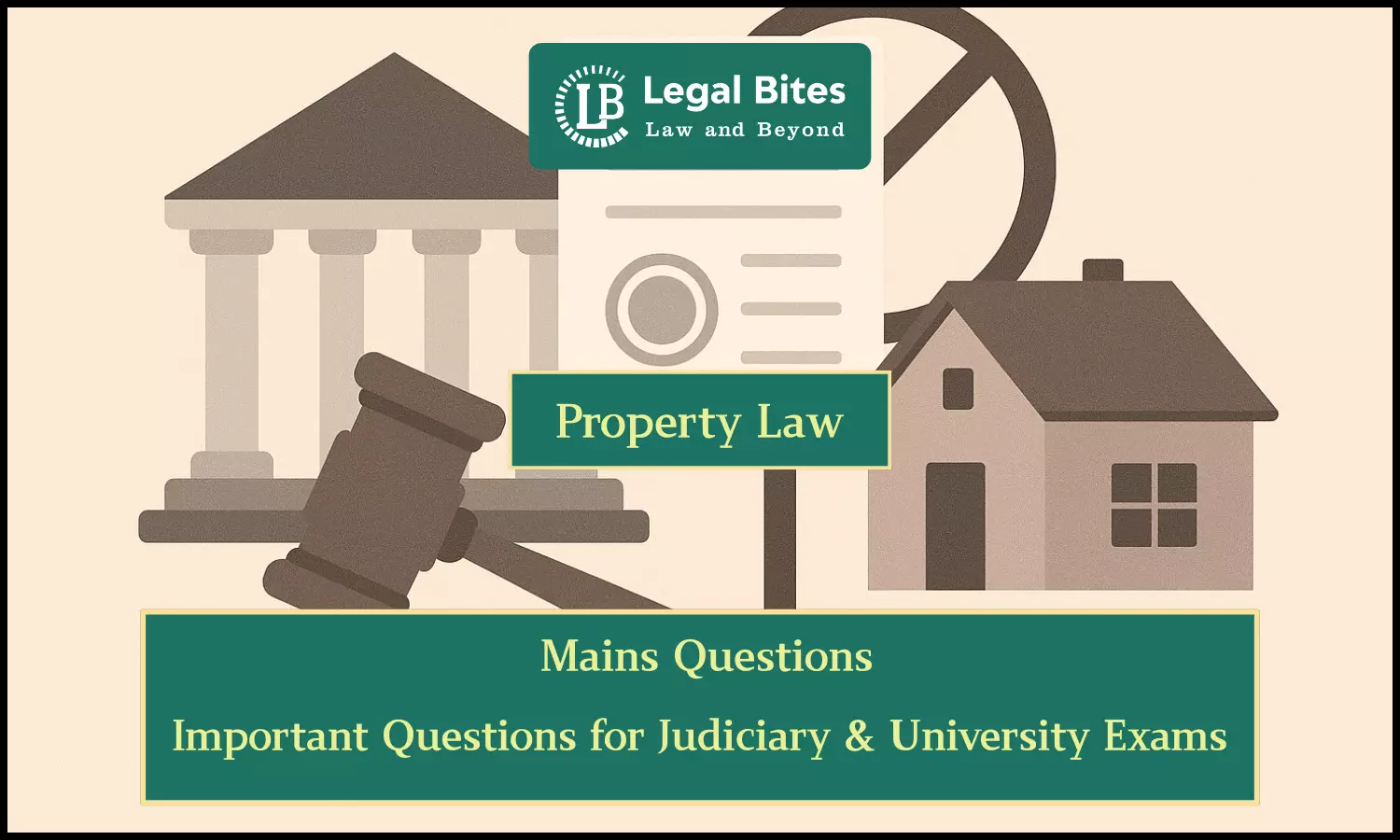What do you understand by the Doctrine of Lis pendens? Explain with illustrations.
Find the answer to the mains question of Property Law only on Legal Bites.

Question: What do you understand by the Doctrine of Lis pendens? Explain with illustrations.Find the answer to the mains question of Property Law only on Legal Bites. [What do you understand by the Doctrine of Lis pendens? Explain with illustrations.]AnswerLis Pendens literally means ‘litigation pending’ or ‘pending suit’ and is drawn from the concept based on the maxim “Pendente lite nihil innovature” which means that nothing new must be introduced while litigation or suit...
Question: What do you understand by the Doctrine of Lis pendens? Explain with illustrations.
Find the answer to the mains question of Property Law only on Legal Bites. [What do you understand by the Doctrine of Lis pendens? Explain with illustrations.]
Answer
Lis Pendens literally means ‘litigation pending’ or ‘pending suit’ and is drawn from the concept based on the maxim “Pendente lite nihil innovature” which means that nothing new must be introduced while litigation or suit is pending.
This doctrine states that the Transfer of property shall be restricted when there is litigation pending on the title or any rights that arise directly involving an immovable property.
Alternatively, from the language of Section 52 of the Transfer of Property Act, 1882, the following conditions can be made out:
1. There is a pendency of a suit or proceeding.
2. The suit or proceeding must be pending in a Court of competent jurisdiction
3. A right to immovable property is directly and specifically involved in the suit.
4. The suit or proceeding must be collusive.
5. The property in dispute must be transferred or otherwise dealt with by any party to suit.
6. The transfer must affect the rights of the other party to the litigation.
The doctrine of Lis Pendens has its origin by Lord Justice Turner in Bellamy v. Sabine, 1857, where the Court observed the following:
“This is a doctrine common to law and equity courts, which I apprehend, on the grounds that, if alienation pendente lite was allowed to prevail, it would simply not be possible for any action or suit to be resolved successfully. In any case, the Plaintiff will be responsible for the Defendant who alienated the property before the judgment or the decree and must be obliged, according to the same course of action, to initiate these proceedings de novo.”
The facts of the above case were the following: A person, Mr X, sold an immovable property to Mr A. Mr X’s son, Mr Z, who was the heir of Mr X, sued Mr A in a competent court to declare the sale as void. However, while this litigation was pending, Mr. A sold the property to Mr. B, who did not take notice of the suit. The Court held that the son Mr. Z was entitled to the property and the sale was set aside. Mr. B who purchased the property from Mr A does not get any title as he purchased the property from someone who did not have the title and therefore cannot convey it.
In Ayyaswami v. Jayaram Mudaliar, AIR 1973 SC 569, the Court held that the purpose of this provision is not to deprive the parties of every just or fair argument but rather to guarantee that the parties submit themselves to the jurisdiction and authority of the court which shall determine all claims that are placed before it to the satisfaction of the parties concerned.

Mayank Shekhar
Mayank is an alumnus of the prestigious Faculty of Law, Delhi University. Under his leadership, Legal Bites has been researching and developing resources through blogging, educational resources, competitions, and seminars.
